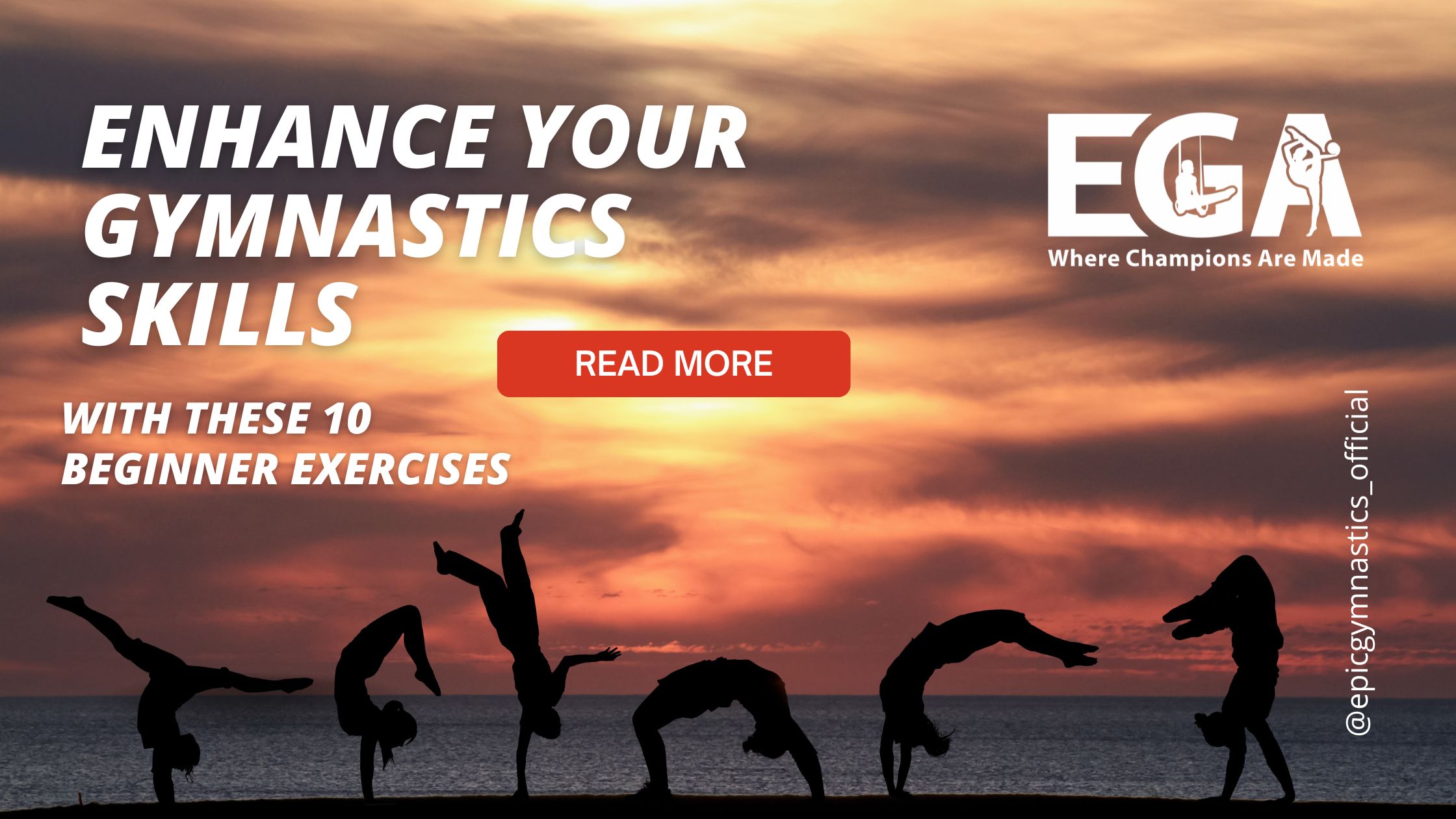
- +91 8553346300
- [email protected]
Menu

Gymnastics is a sport that combines strength, flexibility, balance, coordination, and endurance, making it one of the most physically demanding activities. For young gymnasts, the rewards are immense, from developing a strong body to learning discipline and building self-confidence. However, along with the excitement of learning new skills and pushing the body to new limits comes the risk of injury.
Injuries are a common concern in gymnastics due to the high-impact nature of the sport and the intense physical demands placed on young athletes. These injuries can range from minor sprains to more severe fractures or ligament tears. The positive news is that many of these injuries are preventable with the right precautions, training practices, and supervision. This article will discuss the most common injuries young gymnasts face and provide essential tips for injury prevention, focussing on proper stretching, equipment use, training techniques, and supervision.
Understanding the common gymnastics injuries is the first step in prevention. Gymnastics injuries can occur due to overuse, improper technique, or accidents during practice or competition. Here are some of the most frequent injuries young gymnasts experience:
1. Sprains and Strains
2. Wrist injuries Wrist injuries are common in gymnasts, especially in the developmental stages when their bones and muscles are still growing. The repetitive weight-bearing movements on the hands, such as in handstands, cartwheels, and tumbling, place significant stress on the wrists.
3. Ankle Sprains Ankle sprains occur when a gymnast lands incorrectly from a jump or dismount, causing the ankle to roll inward or outward. These injuries are particularly common in floor exercises and vaulting.
4. Knee Injuries The stress of landings, leaps, and flips often causes knee injuries in gymnastics. Common knee injuries include patellar tendinitis (inflammation of the tendon connecting the kneecap to the shinbone) and ACL (anterior cruciate ligament) tears.
5. Back Injuries – Young gymnasts are prone to back injuries due to the extreme flexibility required in the sport. Common back injuries include spondylolysis (a stress fracture in the spine) and disc herniation caused by repeated hyperextension of the back in movements like backbends, walkovers, and vaulting.
6. Shoulder Injuries Shoulder injuries, such as rotator cuff tears and shoulder impingement, are common in gymnasts who perform skills involving overhead movements, like swinging on the bars or supporting their body weight on their arms during tumbling and vaulting.
Preventing injuries in gymnastics requires a multifaceted approach, including proper technique, adequate strength training, flexibility exercises, equipment use, and close supervision. Here are some essential injury prevention strategies for young gymnasts:
A proper warm-up is crucial for preventing gymnastics injuries. Warming up prepares the muscles, joints, and cardiovascular system for the physical demands of the sport. It increases blood flow to the muscles, enhances flexibility, and reduces muscle stiffness, all of which reduce the risk of injury.
Dynamic Warm-Up
A dynamic warm-up involves moving the muscles and joints through a full range of motion rather than holding a static position. Examples of dynamic warm-up exercises include:
Stretching Exercises
Flexibility is a cornerstone of gymnastics, and regular stretching helps reduce the risk of muscle strains and tears. Incorporate the following stretches into your routine:
Make sure to stretch both before and after practice. Practice stretching helps warm up the muscles, while post-practice stretching aids recovery by reducing muscle tightness.
Learning and maintaining proper technique is one of the most important factors in preventing gymnastics injuries. From the very beginning, coaches should emphasise correct form and encourage gymnasts to focus on the fundamentals before attempting advanced skills.
Key Considerations for Proper Technique
Strength Training Exercises for Gymnasts:
Progressive Overload:
When incorporating strength training, it’s important to follow the principle of progressive overload—gradually increasing the weight or intensity of exercises over time. This approach helps gymnasts build strength safely and reduces the risk of overuse injuries.
Safe Equipment Practices:
Supervision is one of the most effective ways to prevent injuries in gymnastics. Coaches play a critical role in ensuring that gymnasts perform skills safely and within their capabilities. Young gymnasts should always train under the supervision of qualified coaches who can provide guidance, correct form, and offer hands-on spotting when necessary.
Key Aspects of Effective Supervision:
Nutrition and hydration play a critical role in injury prevention. A well-balanced diet provides the energy and nutrients needed to support muscle growth, repair, and recovery. Gymnasts should consume a diet rich in protein, healthy fats, carbohydrates, and essential vitamins and minerals.
Staying hydrated is essential for maintaining energy levels and preventing muscle cramps or fatigue. Gymnasts should drink water before, during, and after practice to stay properly hydrated.
Overtraining occurs when gymnasts train beyond their body’s ability to recover, leading to fatigue, decreased performance, and a higher risk of injury. It’s important for both gymnasts and coaches to recognise the signs of overtraining and take action before an injury occurs.
Signs of Overtraining:
Prevention of Overtraining:
Signs of Overtraining:
Prevention of Overtraining:
In gymnastics, the mental demands can be as challenging as the physical ones. The pressure to perform, fear of failure, and anxiety about injuries can all impact a young gymnast’s mental well-being. Ensuring that gymnasts are mentally strong and confident can play a significant role in preventing injuries.
Building mental resilience:
Preventing injuries in young gymnasts requires a comprehensive approach that includes proper stretching, strength training, technique, equipment maintenance, and mental resilience. By focussing on these essential injury prevention tips, gymnasts can enjoy a safer, more rewarding experience in the sport they love.
At the core of injury prevention is an understanding that gymnastics, while physically demanding, can be safely navigated with the right practices in place. From the youngest beginners to the most experienced athletes, every gymnast can benefit from these strategies that ensure their safety and long-term success. Whether through warm-up routines, proper supervision, or attention to mental health, creating a supportive environment is key to nurturing gymnasts’ well-being and athletic growth.

Empowerment, Perseverance, Inspiration and Confidence - Epic Gymnastics Academy is here to support your journey and reach new heights in the world of Gymnastics.

Co Founder and COO of EGA - Epic Gymnastics Academy Bangalore




Epic Gymnastics Academy fosters a love for gymnastics with expert coaching and personalized training, helping athletes of all levels reach their full potential.
“Hard days are the best because that’s when champions are made.” – Gabby Douglas.
Disclaimer: The information provided on this website is for general informational purposes only. Epic Gymnastics Academy makes no representations or warranties of any kind, express or implied, about the completeness, accuracy, reliability, suitability, or availability with respect to the website or the information, products, services, or related graphics contained on the website for any purpose. Any reliance you place on such information is therefore strictly at your own risk. In no event will we be liable for any loss or damage including without limitation, indirect or consequential loss or damage, or any loss or damage whatsoever arising from loss of data or profits arising out of, or in connection with, the use of this website.